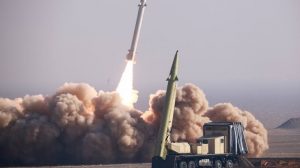Israel vows to reach its strategic goals against Iran’s nuclear program in 2 weeks

The Israeli military believes it will reach its strategic goals against Iran’s nuclear program within one to two weeks.
The operation, launched to eliminate what Israel describes as an “existential threat” posed by Iran’s nuclear ambitions and ballistic missile arsenal, has already resulted in major strikes across key targets.
The IDF confirms it has heavily damaged Iran’s Natanz and Isfahan nuclear enrichment sites, and killed at least nine senior scientists involved in developing a nuclear weapon.
Additional strikes have targeted infrastructure supporting the program, including command centers and administrative offices.
Although the IDF has not attacked the underground Fordo enrichment facility yet, it says the site remains on its target list. Defense Minister Israel Katz noted that Fordo is “definitely on the agenda.”
On the missile front, the military says around 200 Iranian launchers—approximately 40% of Iran’s total—have been destroyed or disabled.
This, officials say, has significantly reduced the scale of missile attacks on Israel over the last two days.
In terms of leadership, Israel claims to have killed dozens of Iranian military commanders, including most of the senior leadership of both the IRGC and Iran’s regular armed forces.
This figure is reportedly three times higher than what planners had projected prior to the start of the operation.
Military officials emphasize that the plan was developed over several months, with the greatest challenge being how to overcome Iran’s air defenses.
According to the IDF, Israel now holds air superiority over western Iran and Tehran.
The IDF believes that Iran’s recent shift to launching smaller missile salvos at Israel is a result of its diminished capabilities following extensive Israeli airstrikes—not a strategic decision to conserve firepower for a prolonged conflict.
According to Israeli military assessments, Iran is struggling to coordinate large-scale barrages due to severe disruptions in its command structure and infrastructure.
The IDF says it has eliminated much of Iran’s top military leadership and destroyed around 40% of its ballistic missile launchers.
In the early stages of the conflict, Iran launched dozens of missiles in each wave. However, over the past day, the attacks have consisted of only a few missiles at a time—though these smaller strikes have become more frequent.
The IDF says it continues to actively track and destroy missile launchers in real-time, significantly weakening Iran’s offensive capabilities.
Due to the reduced scale of each attack, the IDF Home Front Command has discontinued its earlier pre-launch alert system, which had given civilians advance notice to prepare for incoming missile threats. Detecting the launch preparations for smaller barrages is more difficult than for large-scale attacks, prompting the change in alert protocol.
============